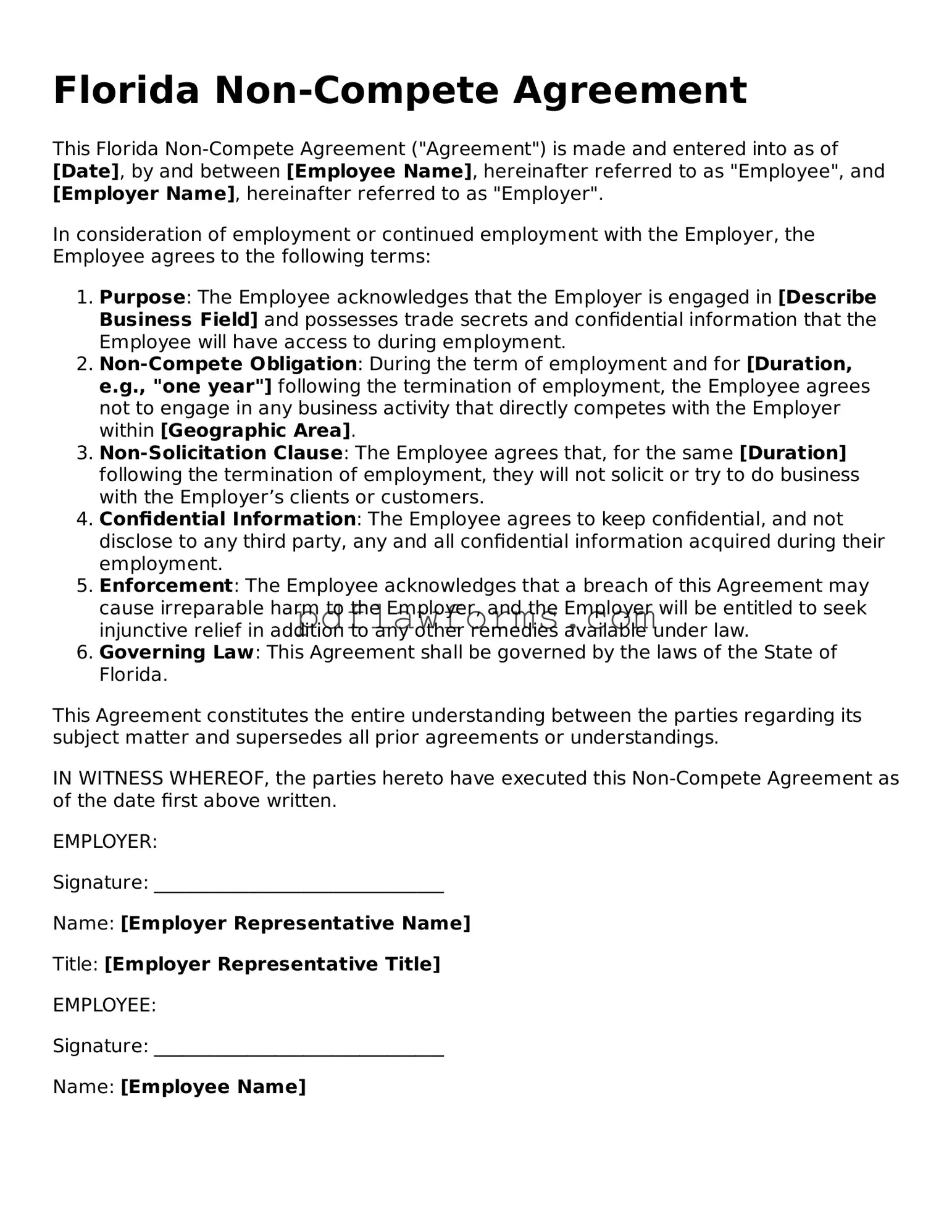Filling out a Florida Non-compete Agreement can be a complex task. Many individuals make common mistakes that can affect the enforceability of the agreement. One frequent error is failing to specify the geographic area where the non-compete applies. Without a clear definition, it becomes difficult to enforce the agreement in a specific region.
Another mistake is not clearly defining the scope of activities that are restricted. If the activities are vague or overly broad, a court may refuse to enforce the agreement. It's essential to be precise about what actions are prohibited to ensure that the agreement is both fair and enforceable.
Many people also overlook the duration of the non-compete. Florida law requires that the time period be reasonable. A common mistake is setting a duration that is either too short or excessively long, which can lead to challenges in court.
In addition, failing to consider the consideration given for signing the agreement is another pitfall. The agreement must provide something of value in exchange for the restrictions imposed. If this element is missing, the agreement may be deemed invalid.
Some individuals forget to include a clause about the governing law. Specifying that Florida law applies can clarify any legal disputes that may arise. Omitting this detail can complicate enforcement and interpretation of the agreement.
Another mistake is neglecting to have the agreement reviewed by legal counsel. Many people think they can handle it on their own. However, an attorney can provide invaluable insights and help avoid potential pitfalls.
Moreover, failing to keep a copy of the signed agreement is a common oversight. Both parties should retain a copy for their records. This ensures that everyone is on the same page regarding the terms and conditions.
Finally, some individuals rush through the process without fully understanding the implications of the agreement. Taking the time to read and comprehend every section is crucial. A well-thought-out agreement protects both parties and helps prevent future disputes.
